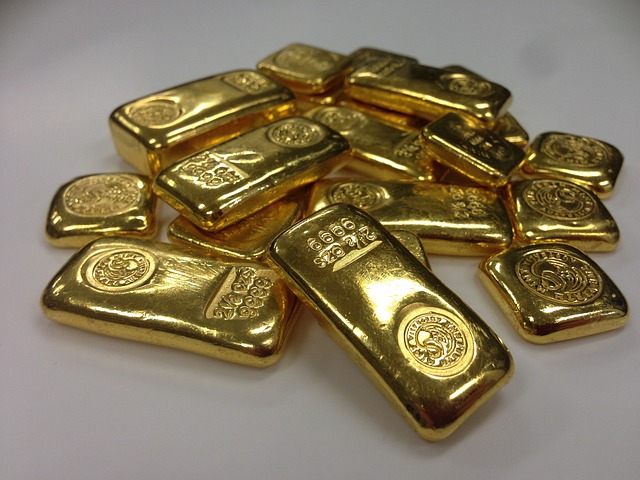A Gold IRA is a strategic addition to a diversified retirement portfolio, offering investors exposure to physical gold, silver, platinum, and palladium. These precious metals have historically served as a hedge against inflation and economic downturns, preserving value when other investments like stocks and bonds may decline. They can protect wealth against currency devaluation and inflation, providing a stabilizing element to an investor's retirement savings. Gold IRAs also offer opportunities for capital appreciation influenced by global demand, geopolitical events, and market sentiment, aiming to smooth out investment returns for more stable long-term growth. The inclusion of precious metals in an IRA can reduce overall portfolio risk due to their low correlation with traditional financial market assets, making them a valuable diversification strategy for preserving and enhancing retirement wealth against inflationary pressures and economic uncertainty.
Discover the enduring value of gold in safeguarding your retirement savings. A Gold IRA offers a unique opportunity for diversification by including physical assets, contrasting sharply with the traditional 401(k) dominated by equities and fixed-income securities. This article delves into the historical stability of gold as a protective measure against inflation and economic uncertainties, emphasizing its role as a viable alternative in retirement portfolios. We will explore how incorporating gold into your IRA can mitigate the volatility often associated with stock, bond, and mutual fund investments within a 401(k). Join us as we elucidate the benefits of diversifying with gold, ensuring your financial tapestry remains resilient through market fluctuations.
- Gold IRA Diversification: Safeguarding Wealth with Physical Assets
- Historical Stability of Gold as a Hedge Against Inflation
- Comparing Gold IRA to Traditional 401(k) Plans
- Volatility of Stock, Bonds, and Mutual Funds in 401(k)s
- Benefits of Adding Gold to Your Retirement Portfolio
Gold IRA Diversification: Safeguarding Wealth with Physical Assets

Incorporating a Gold IRA into one’s retirement portfolio can offer significant diversification benefits by including physical gold, silver, platinum, and palladium among other investments. These precious metals have historically served as a reliable hedge against inflation and economic instability, often performing well during times of market volatility when traditional investment vehicles like stocks and bonds may underperform. The physical nature of these assets within a Gold IRA provides a tangible component to an investor’s retirement savings, potentially safeguarding wealth against currency devaluation and the erosive effects of inflation. Unlike paper assets that are subject to the fluctuating whims of the market, the value of gold, for instance, is derived from its intrinsic properties and global demand, which can act as a counterbalance to the volatility inherent in other investment classes.
Furthermore, a Gold IRA diversification strategy is not solely about risk mitigation; it’s also about capitalizing on the potential growth opportunities that come with investing in precious metals. These assets have a long-standing history as a form of currency and store of value, with their prices often influenced by geopolitical events, central bank policies, and shifts in market sentiment. By including physical gold and other precious metals in an IRA, investors may be able to smooth out the returns in their portfolio over time, potentially leading to more stable retirement savings. This diversification can be crucial for long-term wealth preservation and growth, offering a differentiated return profile compared to traditional investment accounts like a 401(k).
Historical Stability of Gold as a Hedge Against Inflation

Gold has long been recognized for its role as a hedge against inflation, serving as a tangible asset that can maintain its value amidst the eroding effects of rising prices. Throughout history, periods of high inflation have often seen gold prices increase, suggesting a negative correlation between the two. This historical stability of gold makes it an attractive option for investors seeking to preserve their purchasing power over time. The precious metal’s ability to retain value during inflated economic conditions stems from its limited supply and global demand, which can act as a counterbalance to fiat currency devaluation. Investors who hold gold within their portfolios may find that this asset class can offer a measure of protection against the erosive effects of inflation, potentially preserving their wealth more effectively than other investment vehicles that may be more susceptible to such economic pressures.
Comparing Gold IRA to Traditional 401(k) Plans

A Gold IRA presents a distinct opportunity for investors to diversify their retirement portfolios by including physical gold, a commodity that has historically maintained its value over time. Unlike traditional 401(k) plans dominated by paper assets such as stocks and bonds, which can be subject to market volatility, a Gold IRA offers a tangible investment that may serve as a safeguard against inflationary pressures and economic instability. The value of gold often holds steady or appreciates during periods when fiat currencies might lose purchasing power, making it an attractive addition for those seeking to balance their retirement savings with assets less correlated to the stock market’s performance. Conversely, a 401(k) plan typically focuses on a mix of equities, bonds, and mutual funds, investments that can fluctuate widely in response to changing economic conditions. This diversity within a Gold IRA can be particularly advantageous in a broader investment strategy, as it can help mitigate risk by not being entirely dependent on the performance of the stock market or interest rate movements. Investors considering a Gold IRA should weigh its potential benefits against the traditional 401(k) to determine how such an asset might complement their retirement planning and risk tolerance.
Volatility of Stock, Bonds, and Mutual Funds in 401(k)s

401(k) plans are predominantly composed of stocks, bonds, and mutual funds, which are subject to market fluctuations and economic conditions. Stocks, while offering growth potential, are inherently volatile; their prices can be influenced by a multitude of factors including company performance, industry trends, and overall market sentiment. Bonds, often included in 401(k) portfolios for their traditionally lower risk profile, are not immune to volatility either. They can be affected by interest rate changes, credit risks, and economic shifts. Mutual funds, which pool resources from many investors to purchase a diversified portfolio of securities, can also exhibit volatility as they are exposed to the same market dynamics that impact individual stocks and bonds. The performance of these funds is tied to the collective investments within them, and their values can fluctuate significantly in response to market movements. This volatility can lead to short-term losses and long-term uncertainty, which may not align with the retirement savings objectives of many investors. In contrast, physical gold held within a Gold IRA offers a historically proven hedge against inflation and economic instability, providing a more stable investment that can complement the often-volatile nature of traditional 401(k) investments.
Benefits of Adding Gold to Your Retirement Portfolio

Including gold in your retirement portfolio can offer several distinct benefits that complement traditional investment vehicles like those found in a 401(k). Gold’s historical resilience and its role as a non-correlated asset can provide a protective buffer during times of market turbulence or economic downturns. Unlike paper assets, which may lose value rapidly in response to adverse economic conditions, gold has often retained its worth, serving as a hedge against inflation. Its value tends to increase when the purchasing power of currencies diminishes, making it an effective counterbalance to eroding buying power. Moreover, adding gold can diversify your portfolio, potentially reducing overall risk by not being influenced by the same factors that affect stocks and bonds. This diversification strategy aims to smooth out the volatility experienced in a portfolio heavy with equities or fixed-income securities, thereby contributing to more stable retirement savings growth over the long term. Investors looking for a reliable asset to safeguard their purchasing power against inflation and economic uncertainties may find that incorporating gold into their IRA is a prudent financial strategy.
In conclusion, the exploration of a Gold IRA offers a compelling alternative for investors seeking to diversify their retirement portfolios beyond the traditional stock and bond holdings of a 401(k). The historical stability of gold serves as a potential buffer against inflation and economic volatility, providing a form of financial safeguarding. By incorporating physical assets like gold into one’s IRA, individuals can enhance their wealth protection strategies in the face of an ever-changing economic landscape. The decision to include gold in retirement planning merits careful consideration for those aiming to balance their investment portfolio and mitigate risks associated with more conventional financial instruments.
